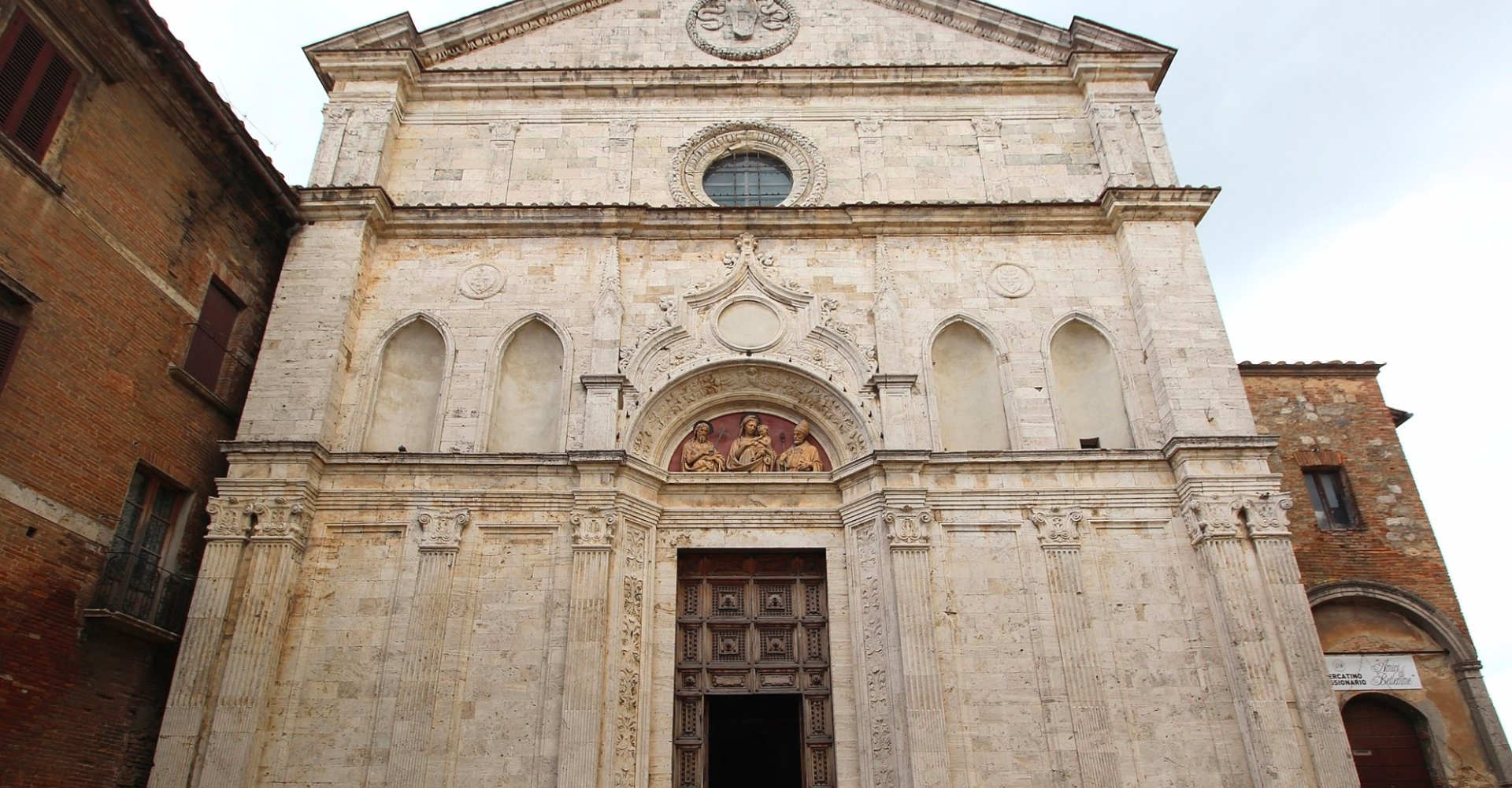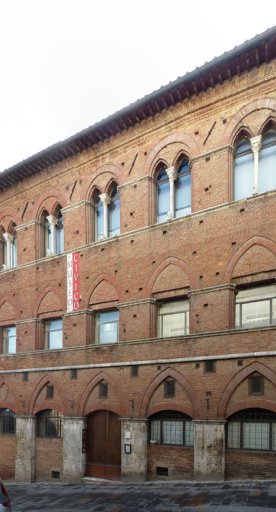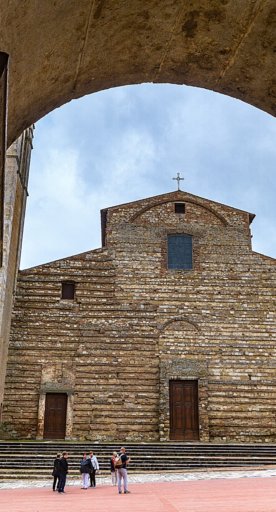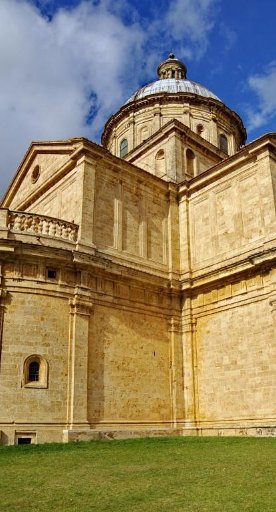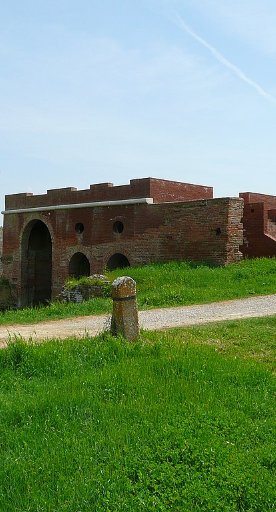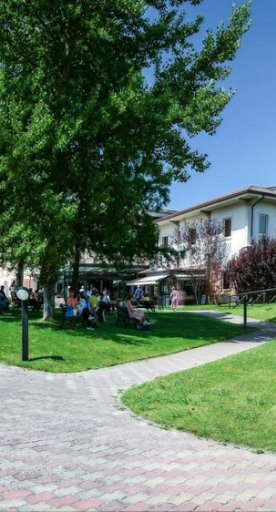Church of St. Augustine in Montepulciano
In the historic town center of Montepulciano, a building erected in Gothic Renaissance style whose construction took more than two centuries to complete
The Church of St. Augustine in Montepulciano has seen numerous stages of construction, punctuated by long pauses and several rearrangements. The official beginning of the work can be traced back to 1285, the year in which the then Bishop of Arezzo Guglielmo of the Ubertini Counts blessed the laying of the first stone, sanctioning the start of a building process that did not end until 1509, as evidenced by the inscription on the facade, although it is possible to state with good approximation that the building was almost finished around 1440.
It is certain that the construction work on the Church of St. Augustine took place in two main stages. The original core of the building is the one dating back to the thirteenth century, while a second stage took place during the fifteenth century with the intervention of Michelozzo di Bartolomeo, a contemporary and follower of Filippo Brunelleschi, whom the Aragazzi family commissioned to develop the facade of the church. Michelozzo's work took place until the late 1420s, and mainly involved the embellishment of the lower part of the facade: he is credited with the decor ring surmounting the church's doorway.
The building continued to undergo numerous works and renovations in the following years. Around the middle of the fifteenth century, the upper part of the facade was built, comprising the third level and the gable, the latter having a large coat of arms on it.
The restoration work that occurred in the eighteenth century radically changed the structural aspect of the church. It is conceivable that it originally had a Latin cross plan and a truss ceiling; today it develops in a single nave, and has plastered walls and pillars supporting the roof vaults. During the renovation, the side arms of the transept were removed and the apse was shortened, which is still visible on the outside of the church.
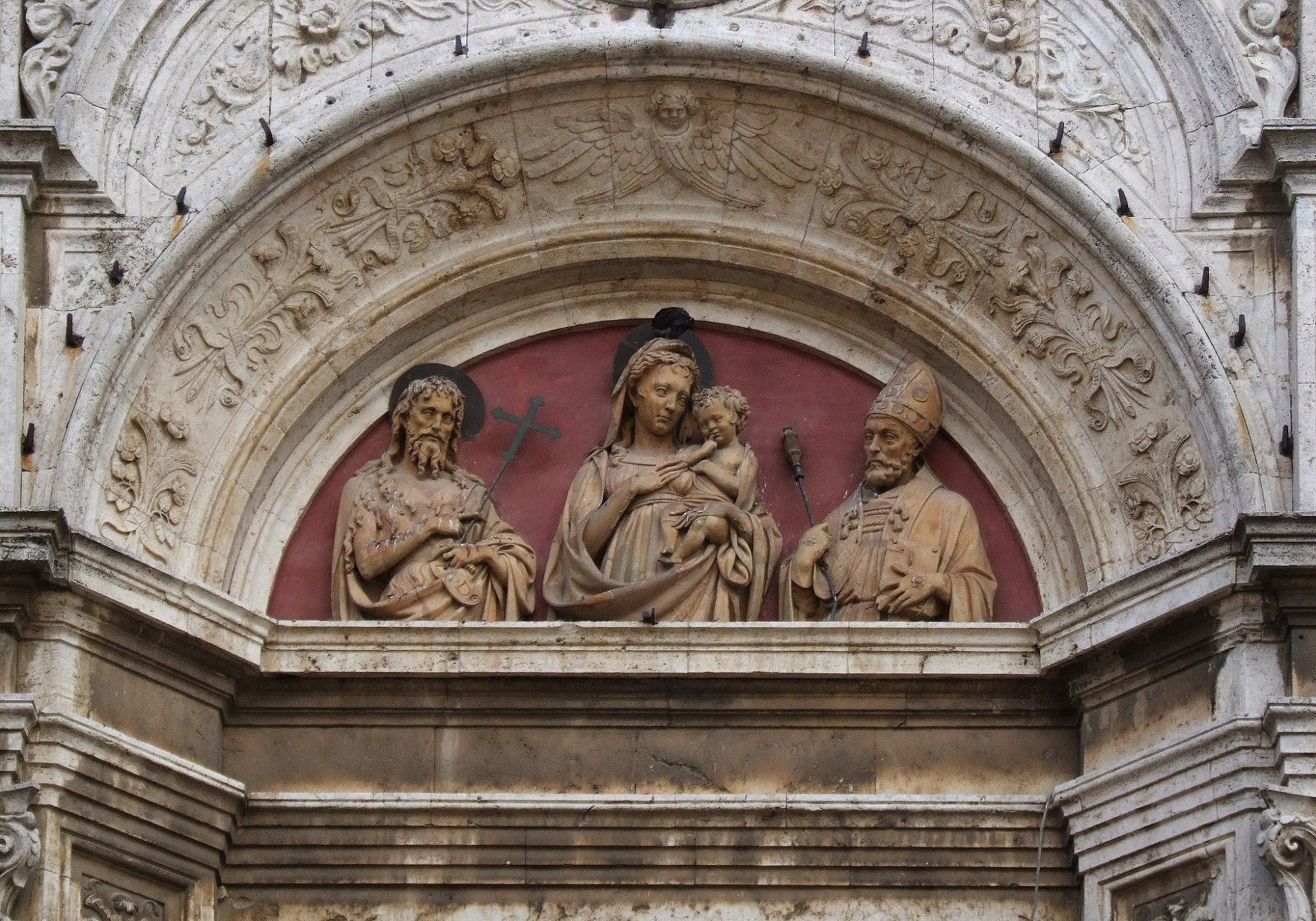
The exterior is in the Gothic-Renaissance style. The facade, made of travertine, is divided into several levels: the lower part is decorated and punctuated by four pilasters, surmounted by four ogival niches, which develop in the second level, where the terracotta bezel by Michelozzo, which depicts the Virgin Mary with Child between Saints John Baptist and Augustine, is located, too. The third level, on which the only rose window opens, shows signs of later works, being out of scale with the rest of the sections and made of a different type of travertine, marking a chromatic as well as stylistic break. The fourth and final level includes the large tympanum, over which towers the coat of arms of the Opera and Fraternity of St. Augustine, the original patrons of the church. The side walls are punctuated by the presence of large windows.
The interior develops along a single nave, the sides of which are decorated with altars and frescoes of the Renaissance school. On the left wall can be seen an altarpiece bearing an Ascension by Cesare Nebbia from Orvieto (1585); the Virgin’s Girdle by Federico Fiori called “Il Barroccio” (second half of 1500s); the Crucifixion with the Virgin and Magdalene by Lorenzo di Credi, dated between the late 1400s and early 1500s.
The right side, on the other hand, is frescoed by a Resurrection of Lazarus by Alessandro Allori (1500); a portrait of Saint Nicholas of Tolentino, by Giovanni di Paolo da Siena dating back to the early 1400s; a Piety by Pomarancio dating from the second half of the 1500s.
The main altar section is also richly decorated. Above the altar can be seen a polychrome wooden crucifix of the 1400s that sources attribute to Donatello or to Antonio da Sangallo. The rear part, where the entrance to the original choir is located, preserves a gallery frescoed during the 1600s by Bartolomeo Barbiani of Montepulciano, a pupil of Pomarancio.
In the Church of St. Augustine are also kept, since 1930, the relics of the Blessed Pucci-Franceschini.
